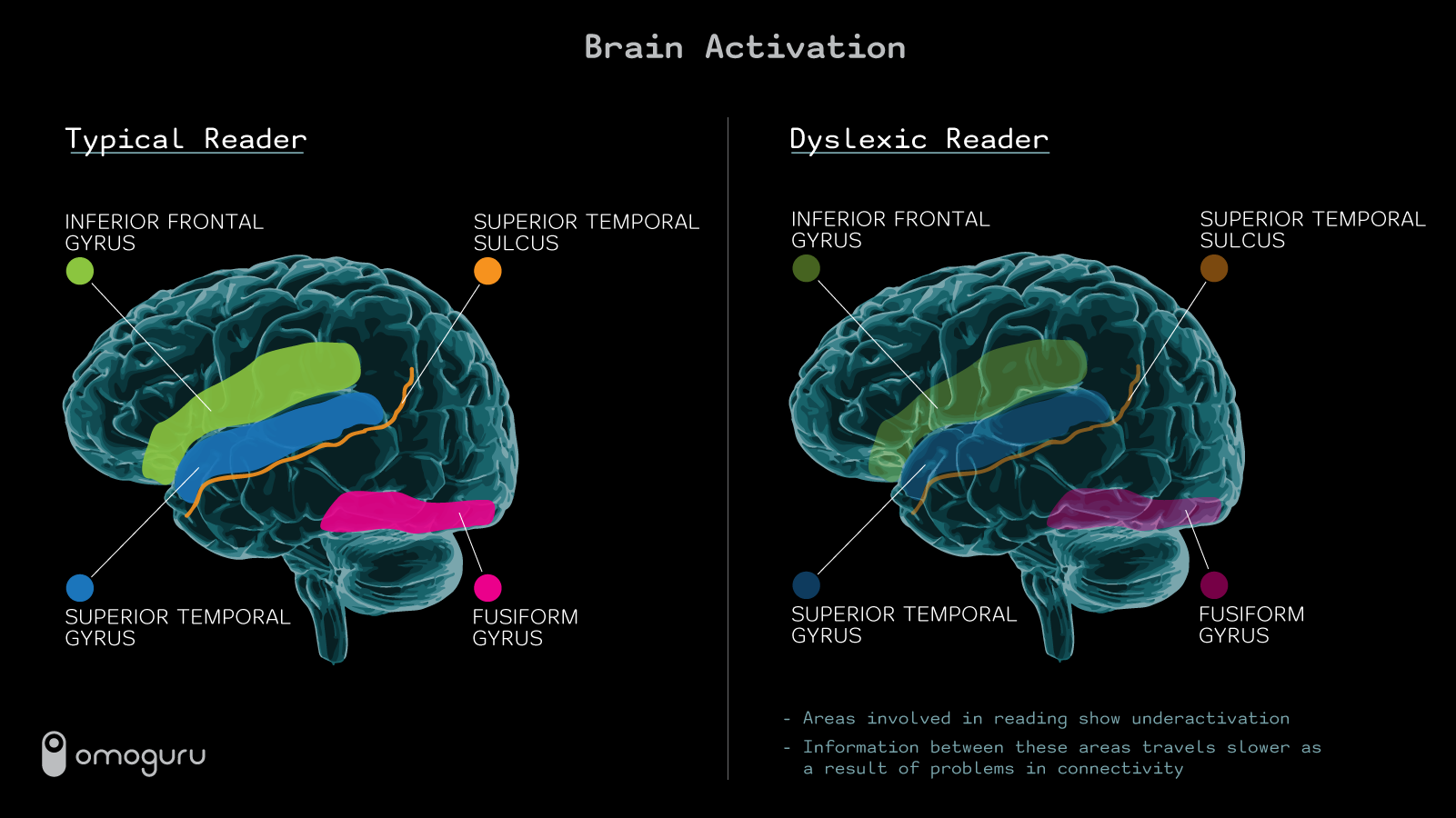
Reading is a complex skill. If you want to be a successful reader you have to decode words, understand the meaning of the words, and read fluently.
The question about how we read has intrigued scientists for years. Advances in technology and neuroimaging have helped unravel this puzzle. So how do we read?
We know that reading is a cultural invention and that our brain wasn’t wired for it. Our brain had to create a specific circuit just for reading, by combining parts of the brain that were originally designed to serve other functions.
We now know that the reading network is dominantly left-lateralized. We also know that many brain areas are involved in reading. The most important are:
This and many other areas jointly contribute to normal reading. They are all connected and they interact with one another.
So, what is happening in the brain of people with dyslexia?
From research, we know that the areas in the brain responsible for reading in people with dyslexia show under activation in reading tasks.
Another difference is in the functioning of pathways that connect these areas. Professor Nadine Gaab calls these pathways highways. It seems that in people with dyslexia these highways are compromised. The tracts may be too narrow, crowded, or bumpy for normal reading and comprehension to occur.
Can this change?
Yes. Research shows that, in struggling readers, after a structured intervention program, changes in brain connections are detected.
So try to work on your reading. It will definitely pay off.
Watch this great video in which you can learn more about dyslexia and reading in the brain of the dyslexics:
* Use Personal tier first 14 days for FREE
* No credit card required
Learn ALL about Lexie.